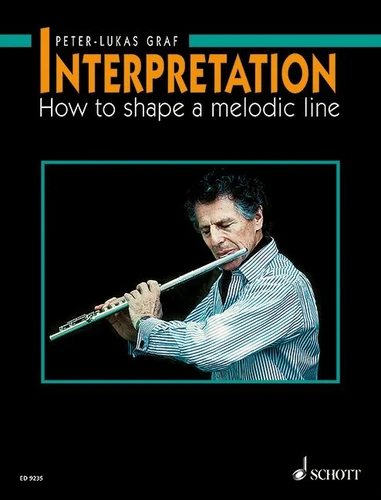Interpretation. How to shape a melodic line. flute.
Par :Formats :
Actuellement indisponible
Cet article est actuellement indisponible, il ne peut pas être commandé sur notre site pour le moment. Nous vous invitons à vous inscrire à l'alerte disponibilité, vous recevrez un e-mail dès que cet ouvrage sera à nouveau disponible.
- Nombre de pages128
- Poids0.461 kg
- Dimensions23,1 cm × 30,3 cm × 0,0 cm
- ISBN3-7957-5752-5
- EAN9783795757526
- Date de parution01/01/2001
- CollectionFLUTE TRAVERSIE
- ÉditeurSCHOTT
Résumé
Musical interpretation is first and foremost a question of shaping a melody or the melodic line of a setting. Music, like any language, follows its own set of rules and a sufficient knowledge and familiarity with musical 'grammar' is therefore an essential prerequisite of any convincing interpretation. The internationally renowned performer and teacher Peter-Lukas Graf explains in great detail the parameters that have to be taken into account for a successful interpretation : rhythm, metre, agogics, articulation, phrasing, ornamentation and implied polyphony, etc.
Numerous examples from the flute repertoire of the 17th-20th century serve as models from which he derives the 'rules' appropriate for an interpretation in keeping with each period. - These rules are not intended to be dogmatic but instead should stimulate the players to form their own opinion. Instrumentation : flute
Numerous examples from the flute repertoire of the 17th-20th century serve as models from which he derives the 'rules' appropriate for an interpretation in keeping with each period. - These rules are not intended to be dogmatic but instead should stimulate the players to form their own opinion. Instrumentation : flute
Musical interpretation is first and foremost a question of shaping a melody or the melodic line of a setting. Music, like any language, follows its own set of rules and a sufficient knowledge and familiarity with musical 'grammar' is therefore an essential prerequisite of any convincing interpretation. The internationally renowned performer and teacher Peter-Lukas Graf explains in great detail the parameters that have to be taken into account for a successful interpretation : rhythm, metre, agogics, articulation, phrasing, ornamentation and implied polyphony, etc.
Numerous examples from the flute repertoire of the 17th-20th century serve as models from which he derives the 'rules' appropriate for an interpretation in keeping with each period. - These rules are not intended to be dogmatic but instead should stimulate the players to form their own opinion. Instrumentation : flute
Numerous examples from the flute repertoire of the 17th-20th century serve as models from which he derives the 'rules' appropriate for an interpretation in keeping with each period. - These rules are not intended to be dogmatic but instead should stimulate the players to form their own opinion. Instrumentation : flute



